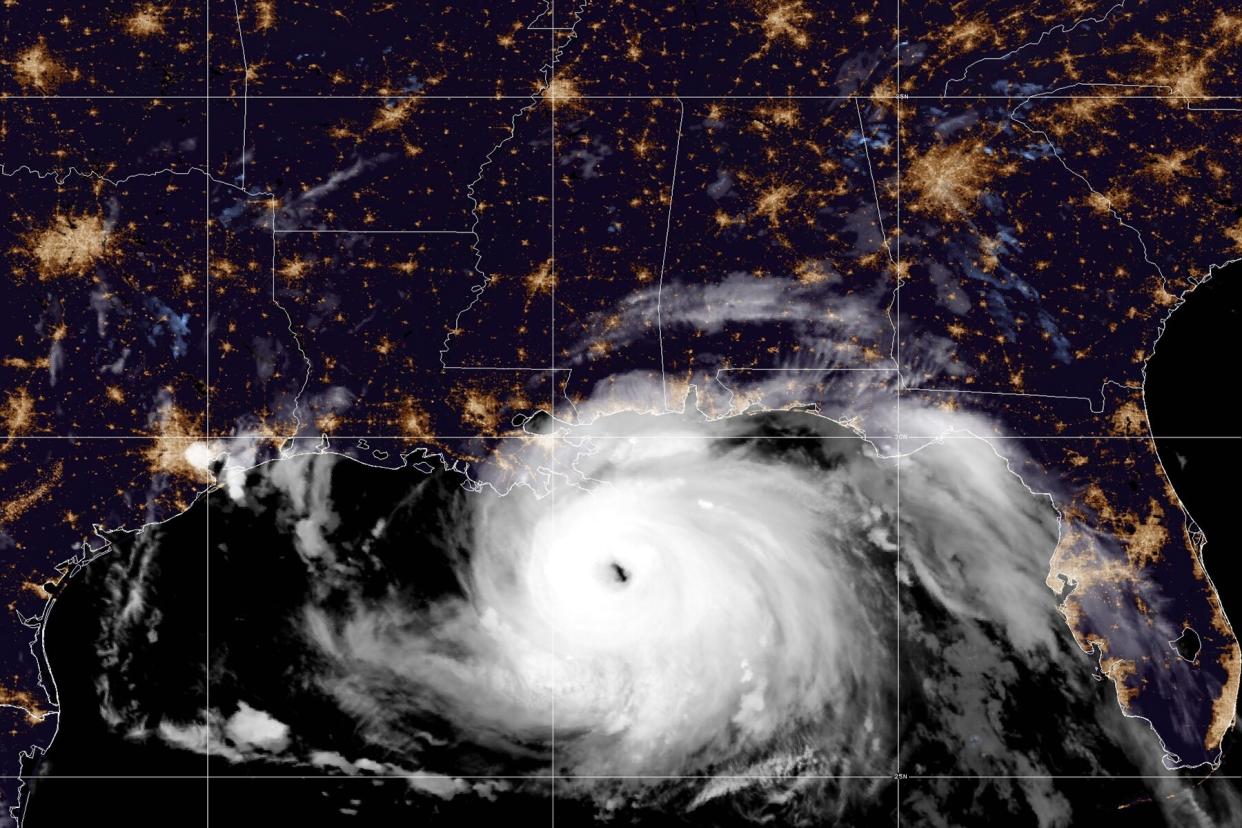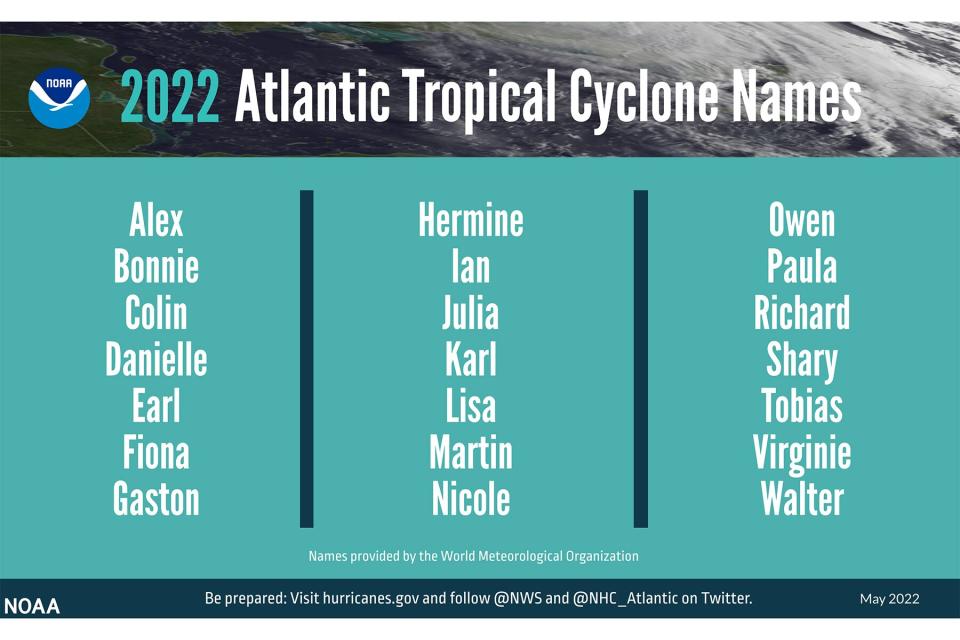An 'Above-average' Hurricane Season Is Predicted in the Atlantic — What to Know

Courtesy of NOAA A visible satellite image of Hurricane Ida approaching land in the Gulf of Mexico taken by NOAA's GOES-16 (GOES East) satellite at 4:10 am (EDT) on August 29, 2021.
Buckle up and get ready for what will likely be an "above-average" hurricane season this year, according to predictions from the National Oceanic and Atmospheric Administration (NOAA).
Marking the official start of the Atlantic hurricane season on Wednesday, forecasters at NOAA's Climate Prediction Center predict a 65% chance of an above-normal Atlantic hurricane season, a 25% chance of a near-normal season, and only a 10% chance of a below-normal season. If true, this would be the seventh consecutive year the world sees "above-average hurricane activity," according to the agency.

Courtesy of NOAA A summary infographic showing hurricane season probability and numbers of named storms predicted from NOAA's 2022 Atlantic Hurricane Season Outlook.
"As we reflect on another potentially busy hurricane season, past storms — such as Superstorm Sandy, which devastated the New York metro area ten years ago — remind us that the impact of one storm can be felt for years," NOAA Administrator Rick Spinrad said in a statement. "Since Sandy, NOAA's forecasting accuracy has continued to improve, allowing us to better predict the impacts of major hurricanes to lives and livelihoods."
The warning — which predicted 2022 would bring 14 to 21 named storms, including six to 10 potential hurricanes — comes as Hurricane Agatha made landfall as a strong Category 2 storm in Mexico on Monday, the strongest recorded hurricane to make landfall in May in the eastern Pacific, according to The Associated Press.
There is now a chance the remnants of that storm could re-form into a tropical depression as it heads towards Florida, CNN reported.

Courtesy of NOAA A summary graphic showing an alphabetical list of the 2022 Atlantic tropical cyclone names as selected by the World Meteorological Organization. The official start of the Atlantic hurricane season is June 1 and runs through November 30.
Hurricanes are defined as having winds of 74 mph or higher on the Saffir-Simpson Hurricane Wind Scale, according to the National Hurricane Center.
This year, NOAA said the increased activity can be attributed to several climate factors, including an ongoing La Niña, warmer-than-average sea surface temperatures in the Atlantic Ocean and Caribbean Sea, weaker tropical Atlantic trade winds, and an enhanced west African monsoon, which the agency said helps create stronger African Easterly Waves that "seed many of the strongest and longest lived hurricanes during most seasons."
Alison Fox is a contributing writer for Travel + Leisure. When she's not in New York City, she likes to spend her time at the beach or exploring new destinations and hopes to visit every country in the world. Follow her adventures on Instagram.

